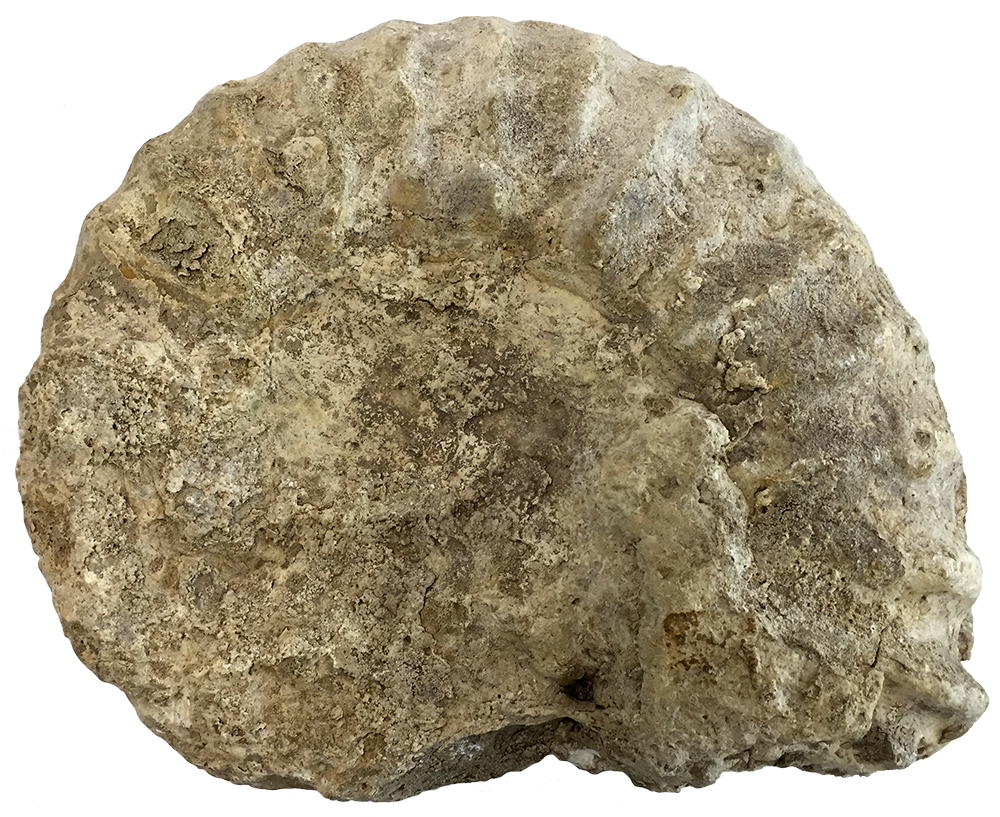
Permian Age, Missouri (299 - 251 MYA)
Ammonites were an extinct group of cephalopods, part of the mollusk group that contains octopuses, ‘squids’, cuttlefish, nautiluses, and the extinct belemnites. The Roman natural philosopher, Pliny the Elder, called these fossils ‘ammonites’ because they resembled the horns of the ram-headed Egyptian god Amon. And many ammonite names, like Endoceras in our basement atrium or Placenticeras in the ESCI main office, include the Greek word ‘ceras’ which refers to ‘horn’ rather than ‘shell’.
During the Medieval Ages, ammonites were better known as ‘snake stones’ and were used to prevent snake bites, neutralize poisons, cure blindness, barrenness, impotence, or restore a cow’s milk. This belief arose from the legend of a 7th century Saxon abbess, St. Hilda of Whitby, ending the town’s snake infestation by turning the offending serpents into stone. Sir Walter Scott mentions this event in his historical romance ‘Marmion: A Tale of Flodden Field’ which is also the origin of the phrase ‘Oh, what a tangled web we weave, when first we practice to deceive!’ (often mistakenly attributed to Shakespeare).
Medieval medicine relied heavily on sympathetic medicines, where an alleged cure resembled the illness’ cause. Hence, since ammonites looked like coiled snakes (minus their heads), ammonites were thought to be potent antidotes for snake bites or poisons. And since snakes were thought to steal milk from cows, it was thought they could even restore a dairy cow’s productivity. Sadly, we now know that ‘snake stones’ lack any medicinal value. However, they were the first fossils used to support both the idea that fossils could establish a sequence of rock units and that extinction occurred. Both those proposals came from Robert Hooke, the celebrated English naturalist, but were well ahead of their time so it was decades before both concepts became widely accepted.
Because of their abundance and distinctive appearance, ammonites were common additions to early cabinets of curiosity, hence this sample’s presence here.